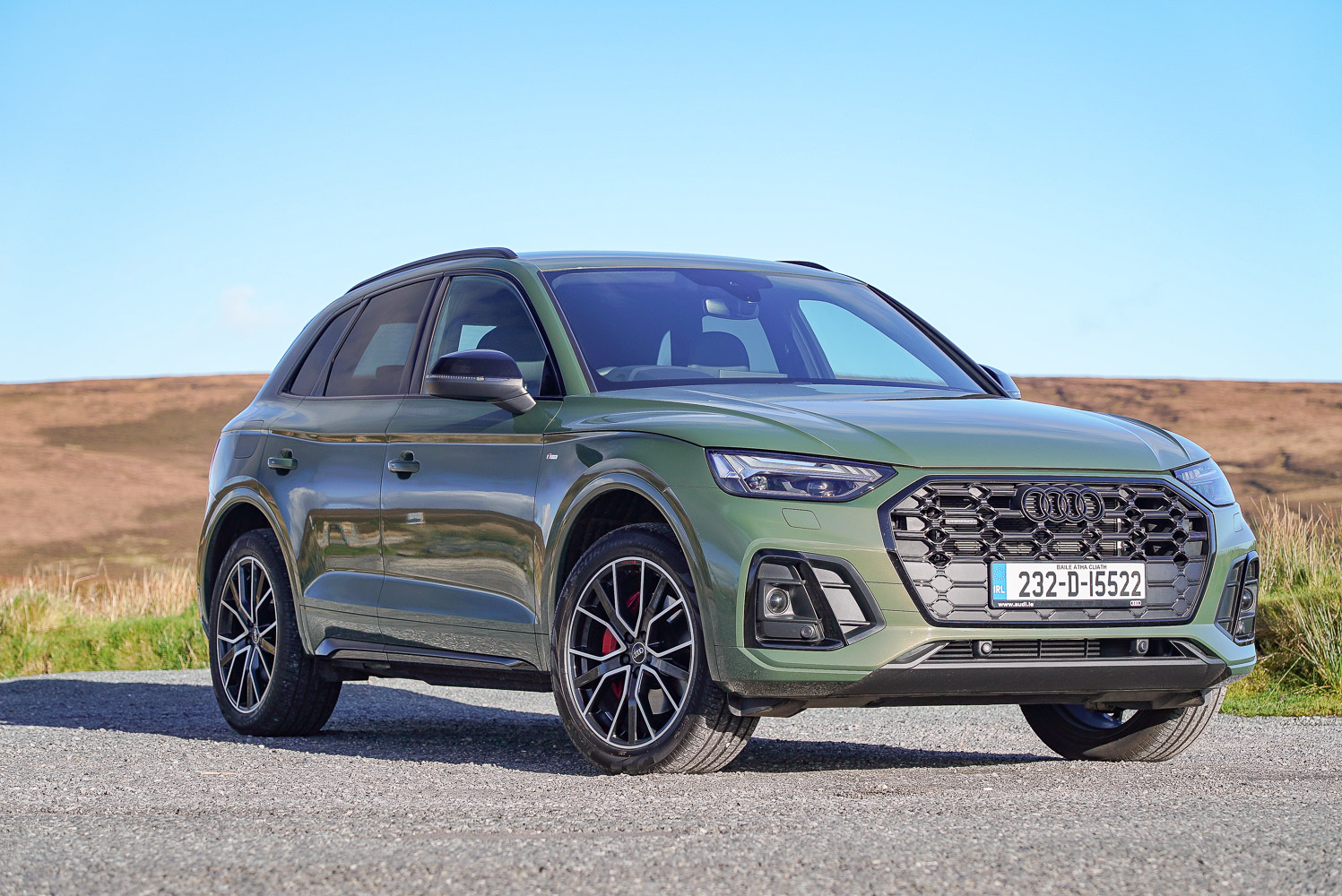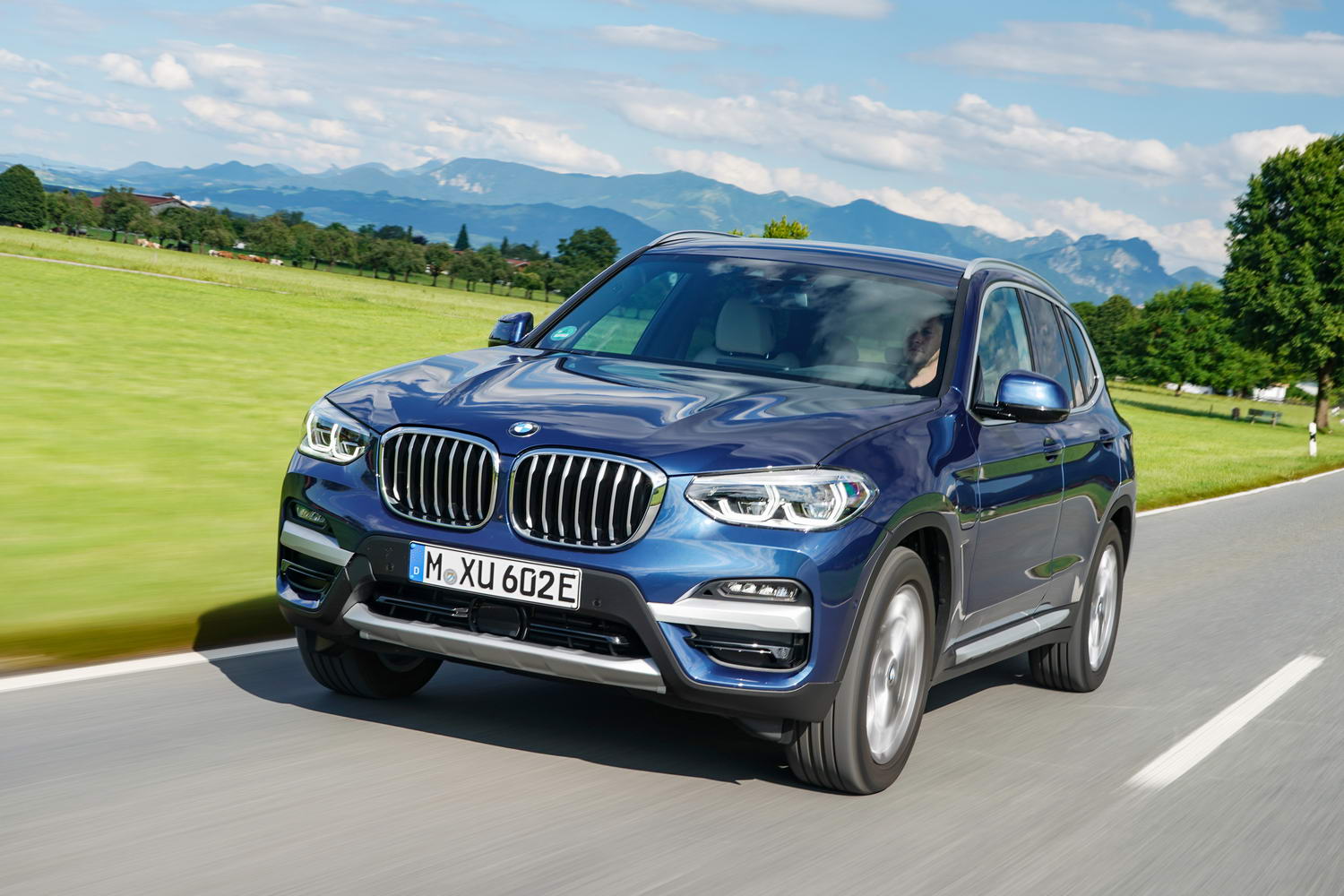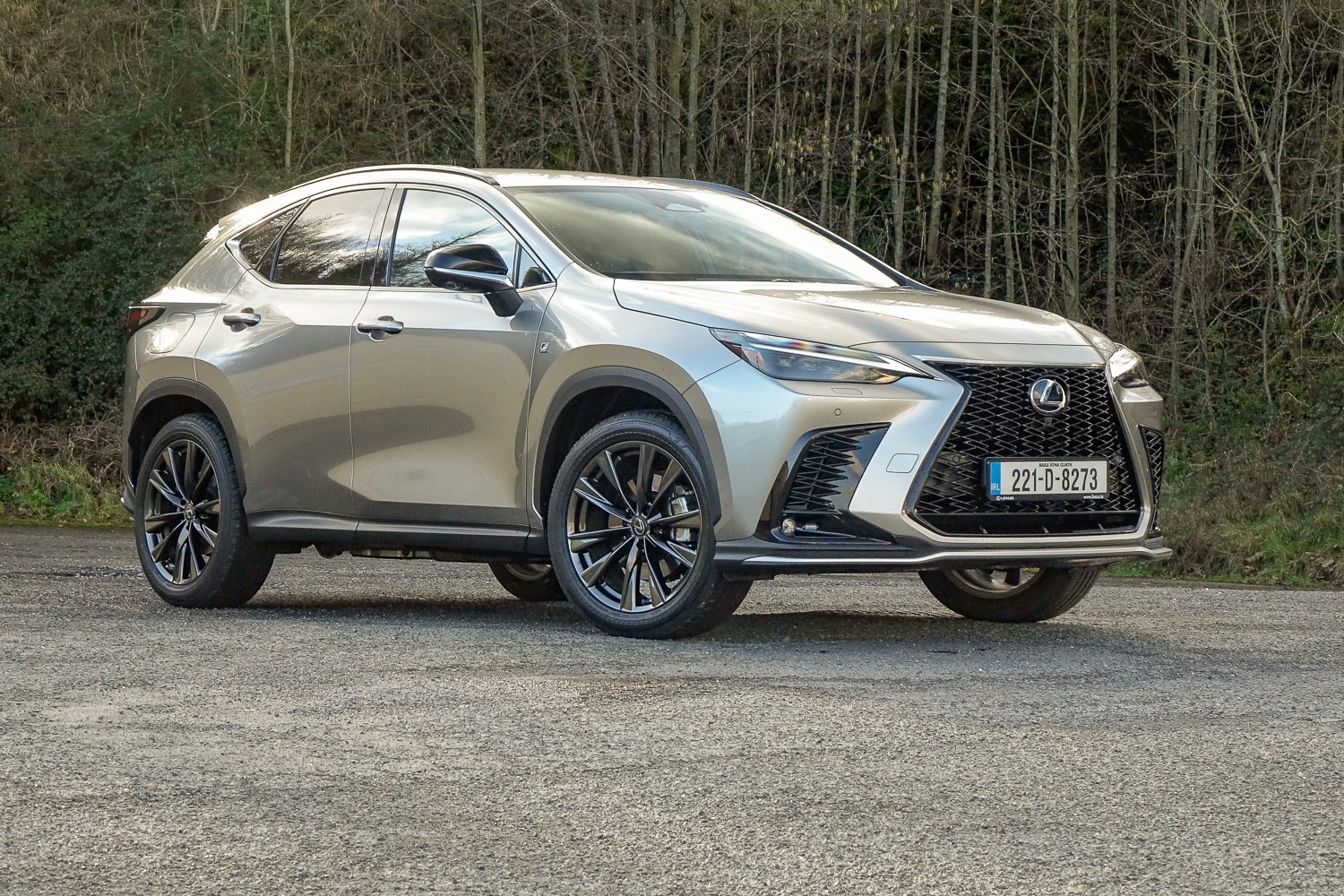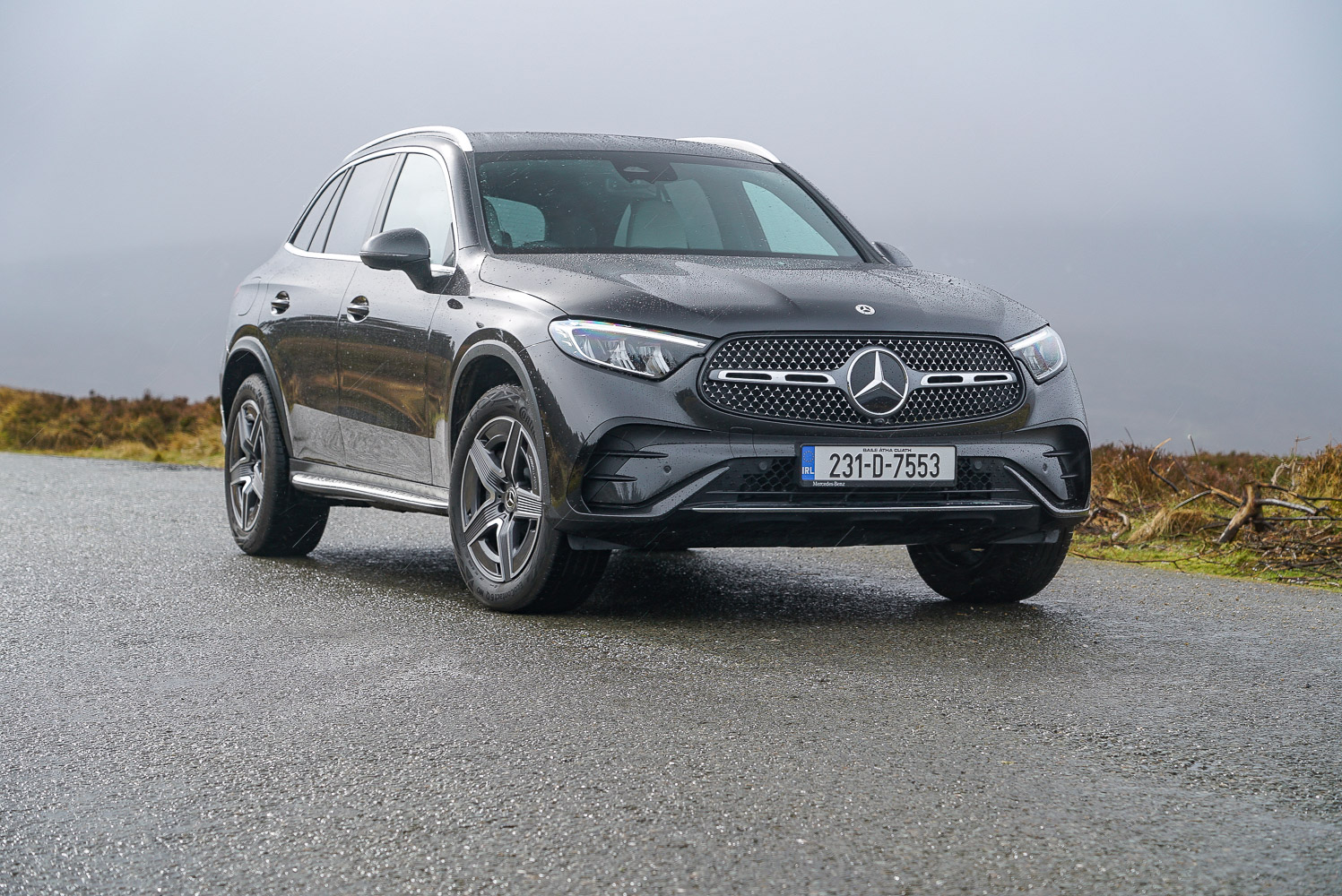Audi Q5 TFSI e overview
The Audi Q5 is one of the most successful of all premium SUV models, and indeed was one of the first on the market, pre-dating the Mercedes-Benz GLC and Lexus NX (although the original BMW X3 did sneak in ahead of the Audi). This second-generation model is coming to the end of its current cycle, and it's becoming increasingly surrounded by in-house electric rivals. Already we have the Q4 e-tron and Q8 e-tron, both of which have similar levels of cabin space, and next year there'll be the all-new Q6 e-tron, which is conceptually even closer to being an electric Q5.
Audi has kept the Q5 up to date, though. A general facelift for all models, in 2021, also saw the arrival of an updated plug-in hybrid model, which gained a bigger battery and more electric-only range. So, with the impressive Lexus NX 450h+ already on the market, the new Mercedes GLC settling in nicely and an all-new BMW X3 PHEV due next year, is the Q5 still a competitive proposition?
It certainly is from a styling perspective; even though this Q5 has been around for a while, it still manages to look chiselled and handsome. It doesn't do any harm that our test car came finished in a delightful shade of dark green, called District Green. Beauty is only skin deep, of course, so what's the Audi Q5 TFSI e like when you start to probe a little deeper?
The Audi Q5 model range
The Q5 lineup is pretty straightforward. You can choose between a variety of 2.0-litre, four-cylinder turbodiesel models, starting with the 163hp 35 TDI, or upgrade to the 204hp 40 TDI with quattro four-wheel drive. Both are fitted with a seven-speed dual-clutch 'S tronic' automatic gearbox as standard. These diesel-engined models are available in either SE or S line spec, with prices starting from €63,720 for a 35 TDI SE, rising to €67,085 for a 35 TDI S line, €67,980 for a 40 TDI SE and €71,555 for a 40 TDI S line. CO2 emissions start at 149g/km, and rise to 189g/km, depending on equipment levels. You can also choose the sleeker 'Sportback' body style, which costs €70,265 for a 35 TDI S line, or 74,935 for a 40 TDI S line.
Then you have a choice of two TFSI e plug-in hybrid models, the 299hp 50 TFSI e (the one we're testing here) which comes in SE or S line spec, or a more powerful 367hp 55 TFSI e, for €72,595, which is only available in the Competition specification. There is the option, again, of the sleeker Sportback body style, starting at €66,040 for the 50 TFSI e SE, rising to €68,225 for the 50 TFSI e S line, and €75,110 for the 55 TFSI e Competition. All TFSI e models come as standard with quattro four-wheel drive. Emissions start from as little as 35g/km.
At the top of the Audi Q5 lineup is the sporty, diesel-engined SQ5, which uses a powerful 341hp 3.0-litre V6 TDI diesel engine (with, of course, quattro four-wheel drive) and which costs €105,330 for the SQ5, or €108,825 for the SQ5 Sportback.
As standard, SE models come with an auto-dimming rear-view mirror, four-zone climate control, power child locks, analogue instruments, a leather-wrapped multi-function steering wheel, a 10-inch touchscreen for the MMI infotainment system, aluminium cabin trim, leather upholstery, ambient cabin lighting, heated front seats, 18-inch alloy wheels, high-tech OLED brake lights and aluminium roof rails.
S line models get sportier exterior styling and a different design of 18-inch wheel, leather sports seats, black cloth headlining, illuminated 'S line' kick plates, stainless steel pedals, an electric tailgate, Audi connect online services, parking sensors and camera, and selectable driving modes.
Competition TFSI e models get 19-inch alloys, privacy glass, noise and heat absorbing windscreen, and a digital instrument panel.
On the safety front, all models get 'Audi Pre Sense' collision avoidance braking, cruise control with a speed limiter, traffic sign recognition and lane departure warning. Euro NCAP last tested the Q5 in 2017, and gave it a five-star rating, with a 93 per cent score for adult occupants, 86 per cent for child occupants and 73 per cent for pedestrian protection. However, Euro NCAP has updated its testing regime since then, so it's likely that the Q5 would not score as highly were it to be re-tested today.
Audi currently has a PCP finance package available for the Q5, with 7.9 per cent APR interest, and based on a 30 per cent deposit, with a GMFV of €31,543, has monthly repayments of €635. Check out audi.ie for the most up to date offers.
The Audi Q5 TFSI e interior
It's time to play Audi Interior Bingo. Does it feel carved from solid? Check. Does it have the rock-like quality of hewn granite? Check. Is it superbly designed, with near flawless ergonomics? Check and check? Does it come complete with the usual Germanic-chic colour scheme of mostly black and silver, with little flashes of red? HOUSEY-HOUSEY!! We have a winner...
OK, so it's become the stuff of tiresome cliche to point out just how well-made and well-laid-out Audi interiors are, but the truth of the matter is that while the likes of Mercedes, Lexus and BMW have largely caught up on the once-unassailable lead that Audi held in this department, the Q5's cabin is still pretty much a masterpiece of design and quality control.
Mind you, it helps that the interior of our test car was upgraded to the tune of a relatively modest €450 to give it the all-digital 'Audi Virtual Cockpit' instrument screen. While we still have more than a little affection for traditional analogue dials, there's no question that the Virtual Cockpit classes this particular joint up a bit. This being a TFSI e model, the screen gets some hybrid-specific graphics as well, including a neat combined gauge that shows you your separate petrol and electric ranges. However, we couldn't do the lovely full-width map display in the instrument binnacle, because in spite of costing more than €70,000, our test car did not have a built-in navigation system, which seems more than a little stingy.
You'll forgive that stinginess when you try out the exceptionally comfortable front sports seats, however, and the driving position is well set-up, with plenty of adjustment in both the steering wheel and the seat. Mind you, that's manual adjustment for the seat, because once again an option box had not been ticked (and that at a time when many rivals offer electric adjustment as standard).
The sheer ergonomic sensibility of the centre stack of the dashboard really does take some beating. The MMI infotainment system is, for the most part, simple enough to operate, and it helps - helps no end - that Audi has retained physical controls for the heating and air conditioning, which means you're not having to stab at an on-screen menu just to turn your heated seat on. Below those heating controls is a rank of buttons for the driving mode selection, the electric-driving mode switch, hill descent control (is anyone ever actually going to take a Q5 somewhere where that might be necessary?) and some other functions. Beneath those is a tiny, and only semi-useful, storage slot, which is frustratingly not quite big enough to hold a modern smartphone.
On the console between the seats lies the stubby, flat-topped gear selector (a wonderfully tactile thing), the volume knob for the stereo (more physical switch common sense there), another frustratingly small storage area under a hinged flap and a long, slim storage space which is ideal for two pencils, or one hot-dog (bun not included).
Under your left elbow is a pair of usefully-sized cupholders, and underneath the armrest a square, but slightly shallow, storage area where you'll find some USB-C connectors. The glovebox is at least fairly useful, and the door bins are of a good size.
In the back, space is decent, with plenty of headroom and legroom for even the tallest passengers. The centre rear seat is pretty narrow, however, and the transmission tunnel chunky, so maybe forget about the Q5's chances of being a genuine five-seater. Rear-seat passengers get their own well-sized door bins, seatback net pockets, a folding armrest with cupholders, a 12-volt charging socket, more USB-C sockets and their own ventilation and heating controls. The Q5's sensible styling means that the big, square rear windows give a good view out, and the standard electronically-controlled child locks will be a boon to any parents with younger children.
Further back, the boot of this TFSI e model is a little truncated compared to the diesel-only models'. Where a standard Q5 has 550 litres under the luggage cover, this hybrid version loses space to the battery, leaving you with 460 litres. That's not too bad, and the boot floor is flat and square, with no loading lip, so it's easy to stack, but it is a disappointment given that the Lexus NX accommodates 520 litres (and yet has slightly more electric range). Still, the back seats split and fold in 40:20:40 formation, and they do fold almost entirely flat, leaving only a slight rise to push against when loading bulkier items in.
The Audi Q5 TFSI e driving experience
The Q5 TFSI e's hybrid system is very well integrated, so there's an almost-seamless transition from petrol to electric power and back again, with only a very occasional, and very slight, lurch to give things away. The only exception to this is when you accelerate hard from a standing start, when the electric motor starts things off, and then calls on the petrol engine to step in quickly when it realises its 105kW (142hp) isn't quite enough for the task. It's kind of like advanced turbo lag, but you soon learn to anticipate it, so it's not intrusive.
Overall performance is really very good, as you'd expect from a car with 299hp and 450Nm of torque, even one with a kerb weight of 2.1 tonnes. The Q5 feels fleet and rapid at pretty much all times, even when you're driving in the Efficiency mode of the selectable driving setup. Obviously, calling up Dynamic mode means that acceleration feels sharper, but to be honest I don't think you'd need it very much - the Q5 TFSI e feels punchy in all modes.
What it's not is especially economical. Now, that's always a fraught arena for a plug-in hybrid. In electric mode, with a full charge, we found that the Q5 TFSI e performed well, delivering 50km of its official 62km in urban driving, falling to around 35-40km if you head out on the dual carriageway. It's certainly enough for most people's daily commuting, especially if you can charge at work as well as at home. The 14.4kWh battery - larger than it used to be - will charge in 2.5 hours from a 7.4kW charger, or eight hours from a domestic three-pin socket, so if you have a driveway at home and a convenient power outlet, you could probably get away without installing a home charging point for now.
The problem - as it so often is for PHEVs - is longer journeys when the battery essentially becomes dead weight. While we've seen some impressive long-haul economy figures from plug-in hybrid models of late - the new Range Rover PHEV, and the Toyota RAV4 PHEV especially - the Audi doesn't do so well. Long motorway hauls will see you averaging around 9.5 litres per 100km, which with a 50-litre fuel tank isn't going to get you far. In fact, the Q5's long-haul range on a tank of petrol doesn't even compare all that well with the electric range of its smaller (but just as spacious) and more affordable Q4 e-tron electric sibling.
It's also, sad to say, not that much fun to drive. The steering, in any of the driving modes, is just too light and doesn't give you confidence when turning into a corner, making the front end feel too vague and floaty. It's a real shame, as you can feel that the chassis is inherently well set-up, although the optional 20-inch alloys fitted to our test car didn't do the ride quality any favours.
Cruising up the motorway in silence and refinement (save for a bit of a thrum from the big tyres) is definitely a Q5 TFSI e strong point, as is wheeling silently around town on zero-emissions power. But it's too thirsty on long runs and too remote on twisty roads to be considered a true all-rounder.
Our verdict on the Audi Q5 TFSI e
It's a shame that the driving experience and the long-range economy can't live up to expectations, as the Q5 TFSI e's extra electric range is certainly welcome, and in terms of build quality, styling and cabin layout this is a car that, almost at the end of its life, can still teach younger rivals a trick or two.
What do the rest of the team think?
Undoubtedly the Q5 still looks smart outside and in, and it's probably quite a satisfying car to own, but I'm not entirely convinced by the hybrid powertrain. It feels really underpowered when using only electric power and yet you'll want to do that as often as possible to keep costs down. The brake pedal modulation and feel are not great, either. Strange that it doesn't feel as polished as it should for a car quite far through its lifecycle.
Shane O' Donoghue - Editor
































